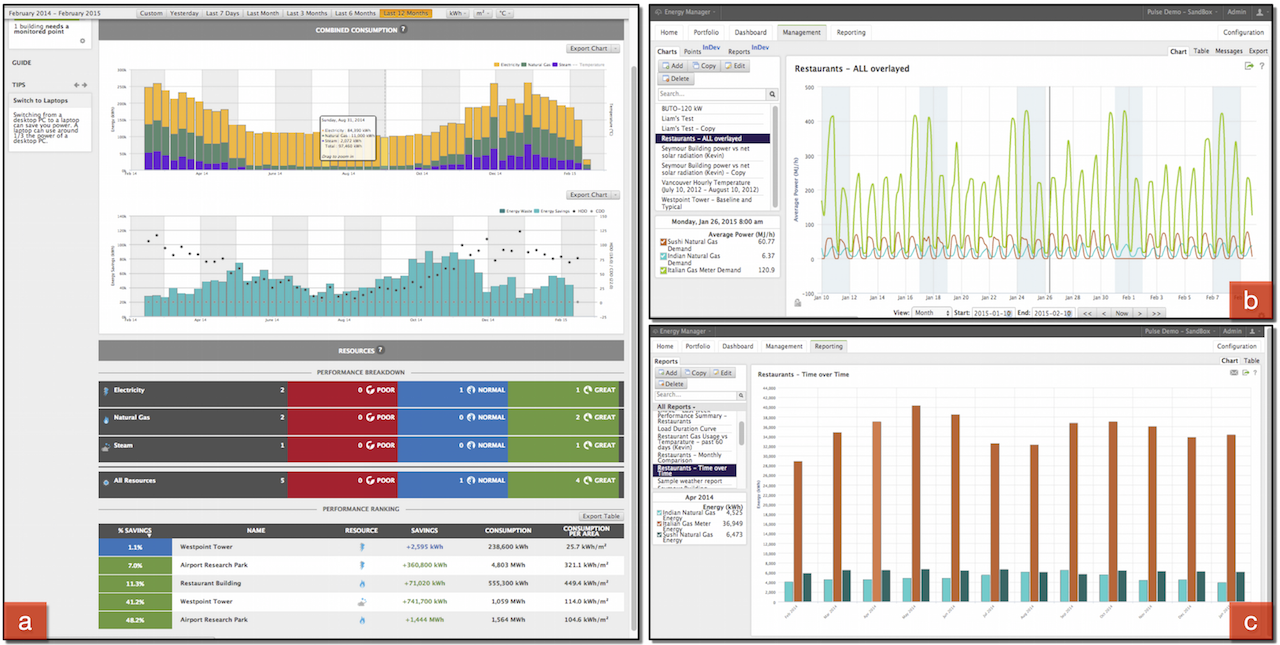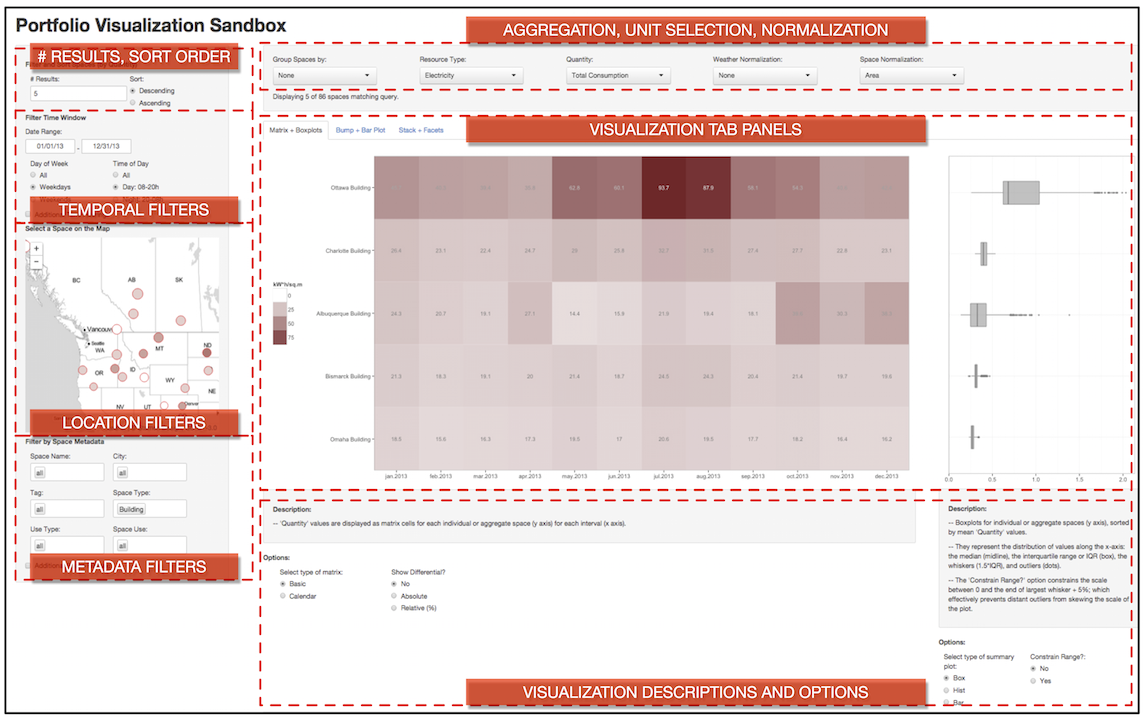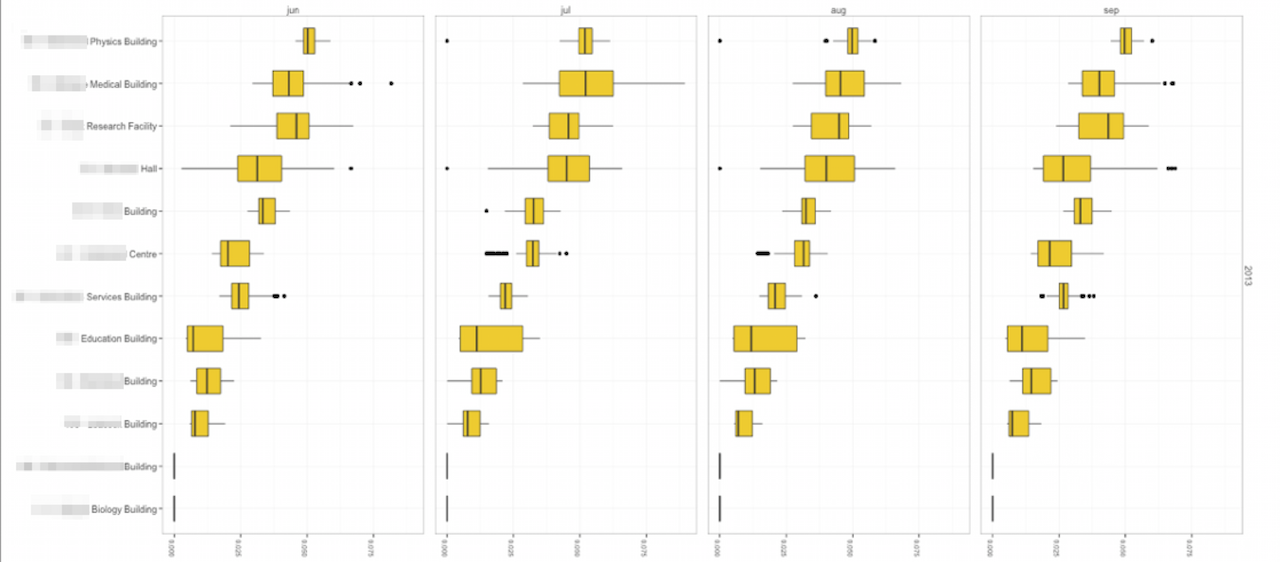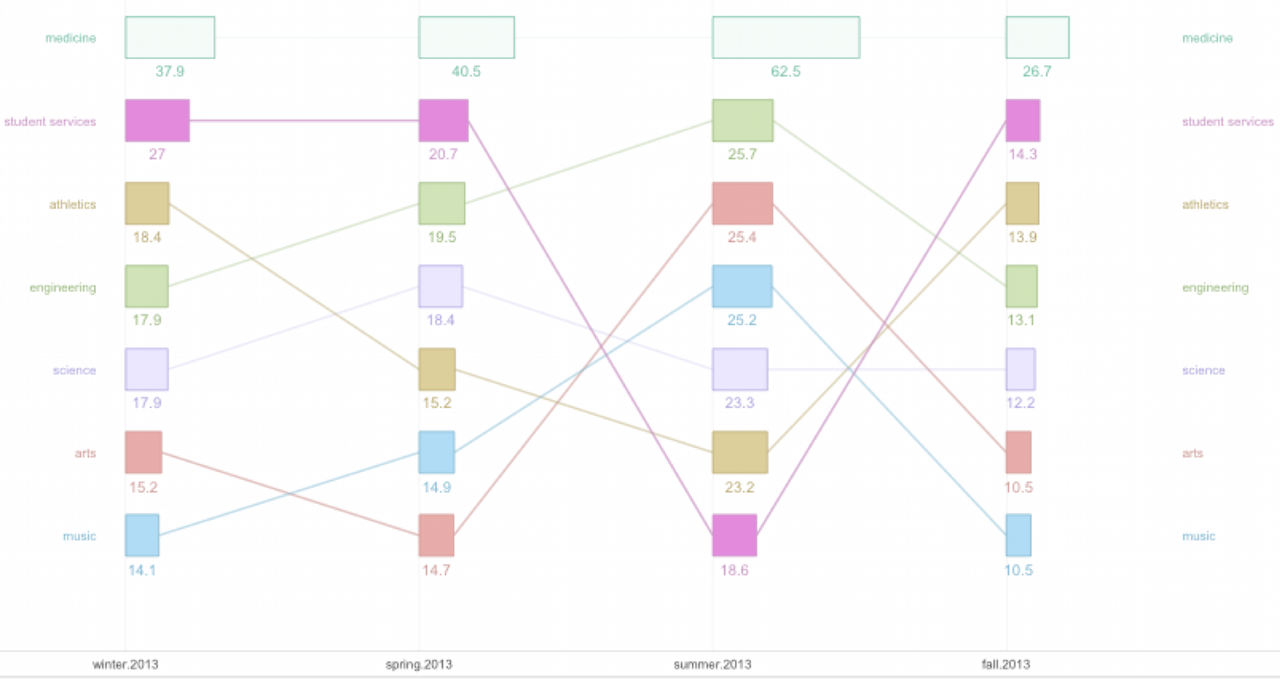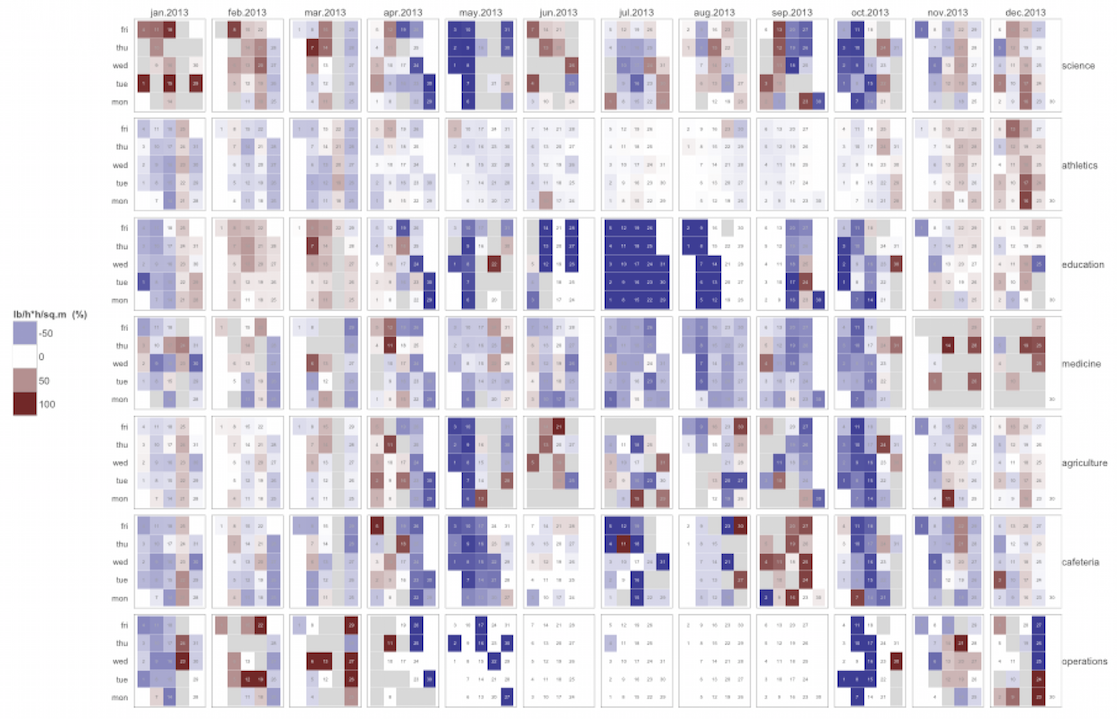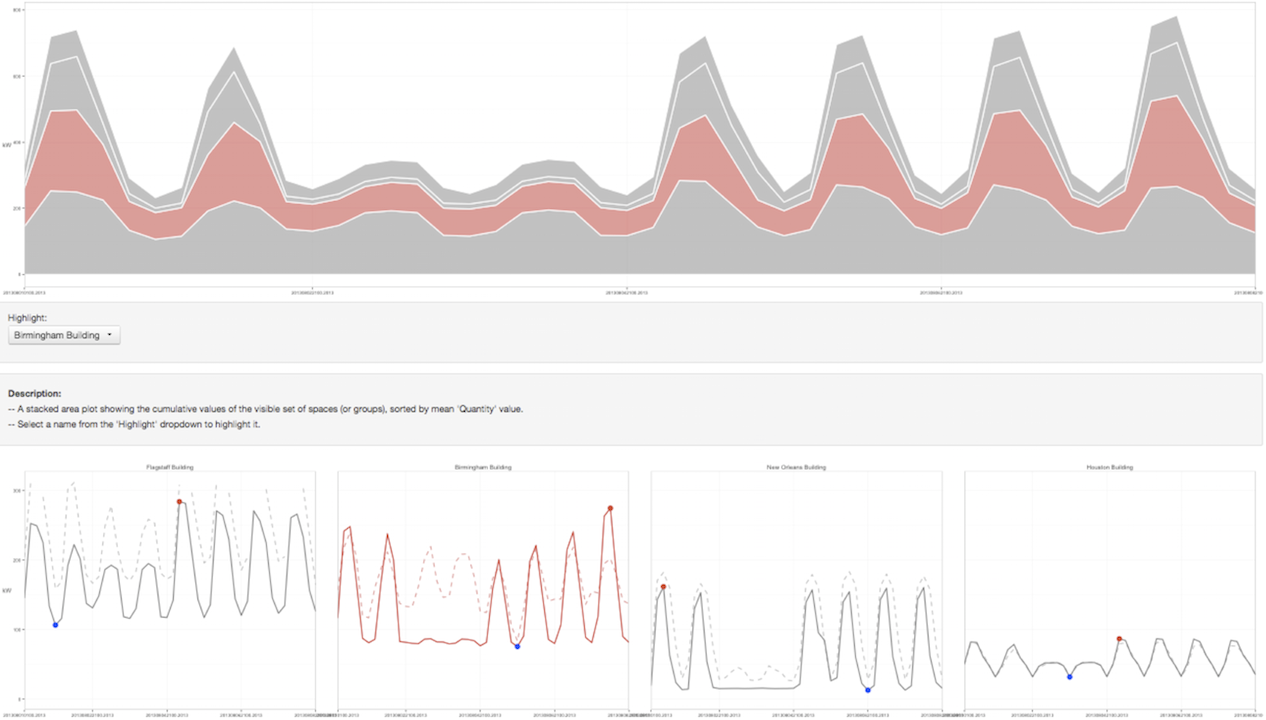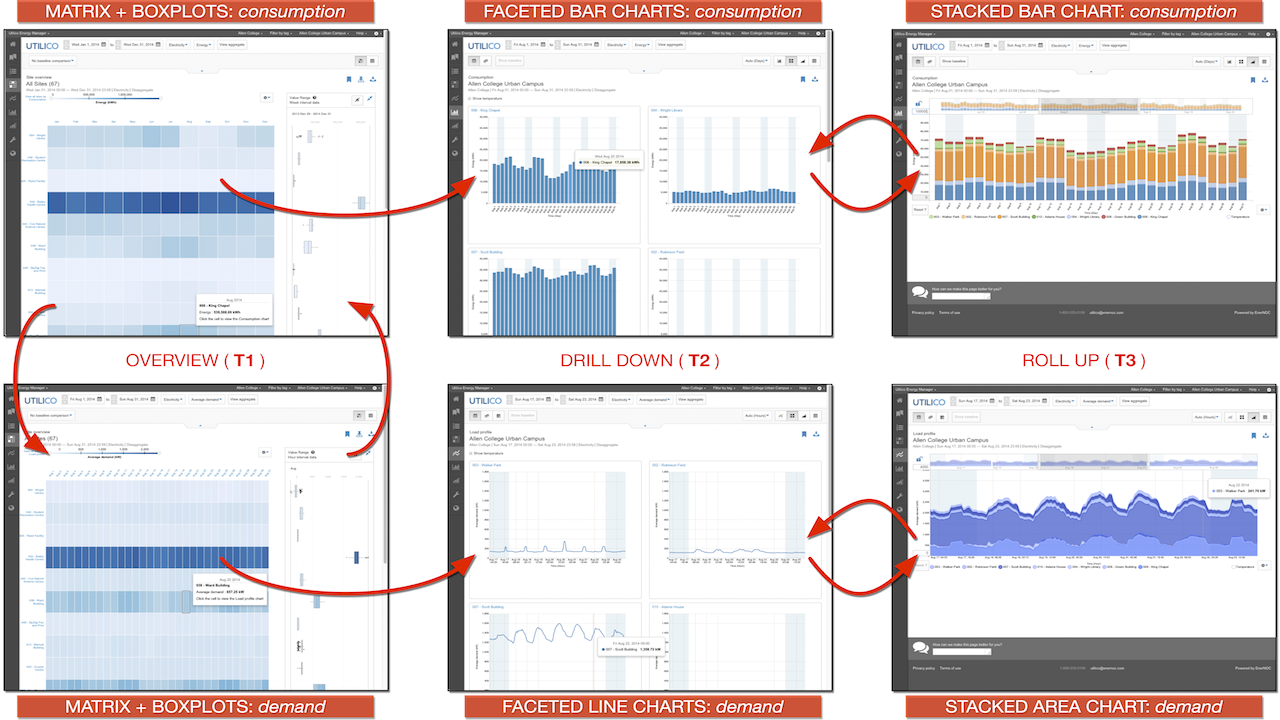Matches, Mismatches, and Methods:
Multiple-View Workflows for Energy Portfolio Analysis
Abstract |
Paper |
Talk |
Videos |
Figures |
Supplemental Material
Abstract
The energy performance of large building portfolios is challenging to analyze and monitor, as current analysis tools are not scalable or they present derived and aggregated data at too coarse of a level. We conducted a visualization design study, beginning with a thorough work domain analysis and a characterization of data and task abstractions. We describe generalizable visual encoding design choices for time-oriented data framed in terms of
matches and
mismatches, as well as considerations for workflow design. Our designs address several research questions pertaining to scalability, view coordination, and the inappropriateness of line charts for derived and aggregated data due to a combination of data semantics and domain convention. We also present guidelines relating to
familiarity and
trust, as well as methodological considerations for visualization design studies. Our designs were adopted by our collaborators and incorporated into the design of an energy analysis software application that will be deployed to tens of thousands of energy workers in their client base.
Paper
Matches, Mismatches, and Methods: Multiple-View Workflows for Energy Portfolio Analysis
Talk
Matthew Brehmer presented this paper in the
Design Studies and Methodology session at 11:50 AM CT on October 28th, 2015 at
IEEE InfoVis 2015.
Videos
High-Resolution Figures
Click on a Figure to open in a new tab.
Supplemental Material
Matthew Brehmer
Last modified: Aug 3, 2015.

